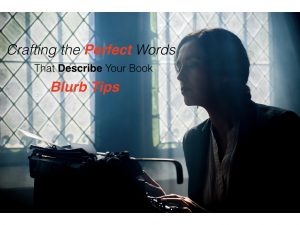Inkripples is a toss into the pond. Take a look at the ripples… Add your own… Mary Waibel’s World at Katie Carroll Observation Desk and at Kai Strand’s blog.
For those of you not aware, blurbs are the few paragraphs about a book that appear on the back cover or in today’s world, on online book seller pages. Those words are the first thing the potential reader sees about your book. If they clearly describe and entice, the reader will hit the purchase button. I can’t emphasize enough how important the blurbs are and how hard they are to write.
sees about your book. If they clearly describe and entice, the reader will hit the purchase button. I can’t emphasize enough how important the blurbs are and how hard they are to write.
Taking my 80,000 word book and distilling it into a few paragraphs–a few enticing, enchanting paragraphs–is one of the hardest tasks I have as a writer. Perhaps if I was a more structured writer, it would be easier. That is, if I had a clear theme and outline going into the project. But, being a pantser writer–or one who moves with the flow of the book–it’s quite difficult. Often I begin a book with a theme or idea and it totally changes as the book moves forward. This makes blurb-writing a huge headache!
Here are a few things I’ve done to get through that arduous task:
- Read other blurbs. I search for books similar to my book. I look for what captured my attention about that book and how the writer managed to entice me to buy it.
- As you focus on the big picture, also think about your characters. Your characters drive your story and if they are compelling, they need to be front and center in your blurb. Who are the people in your story and what incited them to act?
- Once you get the words on paper and you’ve streamlined them as much as you can, give the blurb to your Beta readers. Let them help you crystallize your thoughts.
Even with all these tips and ideas, I still struggle over my blurb. Does it really capture the reader? Does it showcase my book in the way it deserves?
I remember one of my dearest friends saying she didn’t enjoy the book All the Light We Cannot See because she said the back cover was deceiving. I did enjoy that book, but I understand her response. The back cover and the one-liner for that book talked about how a German boy helped a blind girl during World War II. If you read that book, you know that the two did not meet till close to the end of the book and then for only a few pages. The majority of the book was about something totally different. My friend was correct. The blurb and the one-liner tricked readers into buying. I liked the book anyway because it was a good book, but I’m sure there were readers like my friend who felt betrayed.
Tricking your readers into buying is not a good plan. Many readers feel betrayed and they will say so in your reviews. You might not be as lucky as Anthony Doerr was and win a Pulitzer!
I’m struggling over a blurb for my Work In Progress. I’d love your comments. Would you pick up this book? Is it compelling enough? Where does it hit and where does it miss?
Detective Sargent John Melani is losing sleep over the Langley case. All his instincts tell him it’s a simple story of depression and suicide, but something deep inside gnaws at him. Questions fill his head. He can’t let this one go.
Four women sit in a psychiatrist’s waiting room. Meredith imagines stories about the others, too insecure to learn their truths. Kat sits like a mannequin, hoping to get in and out without notice. Paige compulsively turns the pages of a magazine without seeing any of the photos. Dillon scolds her son but never stops him from coloring the office walls with crayons. Lois enters and suddenly everything goes from quiet to noisy, from dark to light.
Was it a suicide or murder? And who was Lois Langley? Detective Sargent John Melani begins probing and what he uncovers shatters everyone’s world to the point that he wishes he’d written suicide on the final report when it first graced his desk.
Deception is a story about one woman’s power to deceive, which ultimately leads to her destruction. It’s a story that probes the inner mind and taunts us with the question how well can we really know one another?






I actually rather like writing blurbs, but that has only come from lots of practice doing it (both for my own books and helping other writers with theirs). I definitely can be frustrating, but I’ve started using it as a tool to focus my writing.
Thanks, So much. I will definitely take your good advice!
I personally found that my biggest dilemma–how much of the story to include–over the blurb for my debut came largely out of the fact that it’s a small book. I think when I write the blurbs for my full length novels it’ll be easier to entice people without sharing such a high percentage of the story line.
As for your blurb for the work in progress, it’s a bit wordy, but I like it. One major suggestion, in the following sentence:
“Detective Sargent John Melani begins probing and what he uncovers shatters everyone’s world to the point that he wishes he’d written suicide on the final report when it first graced his desk.”
I would actually end this sentence after “world”. It’s a rather long sentence, and I don’t think the rest of the sentence adds the level of emotional impact you’re looking for.
Good luck with blurb writing!